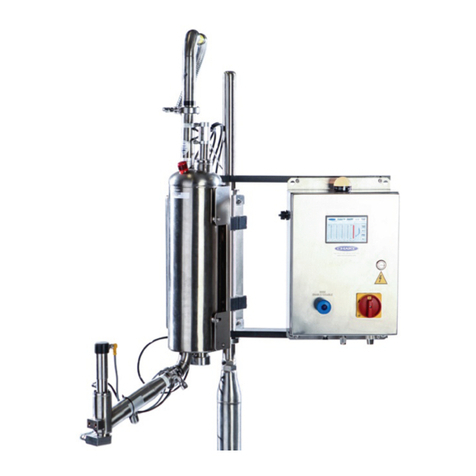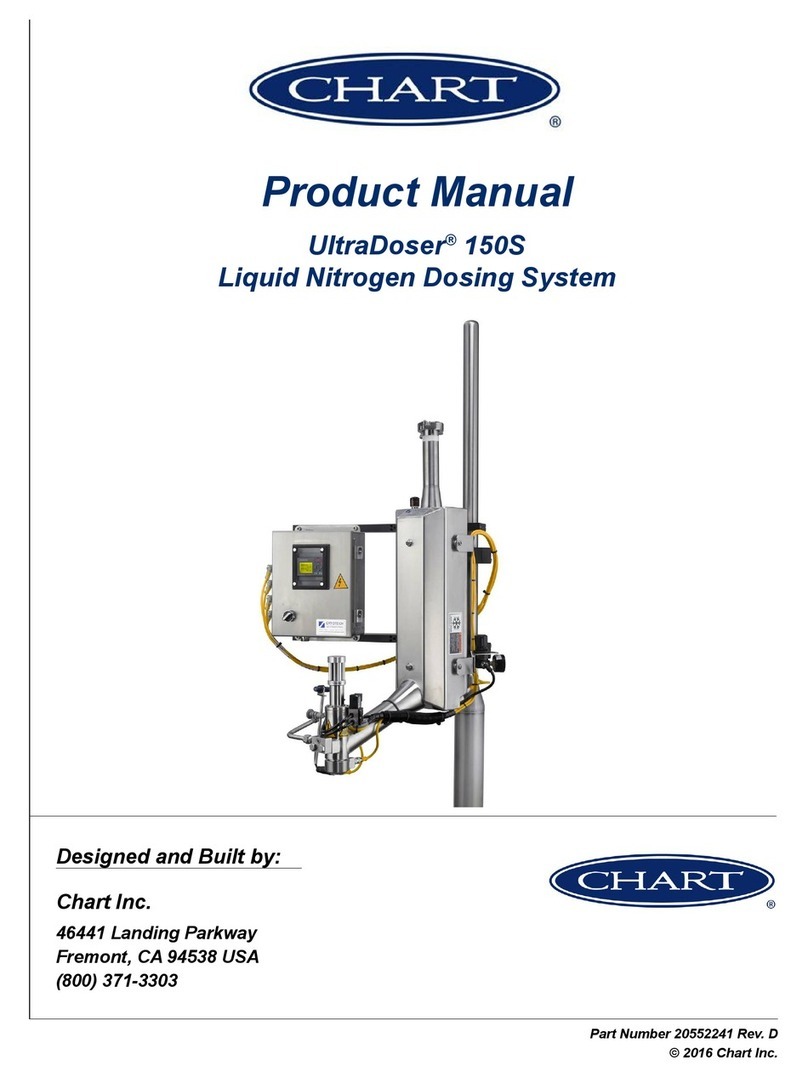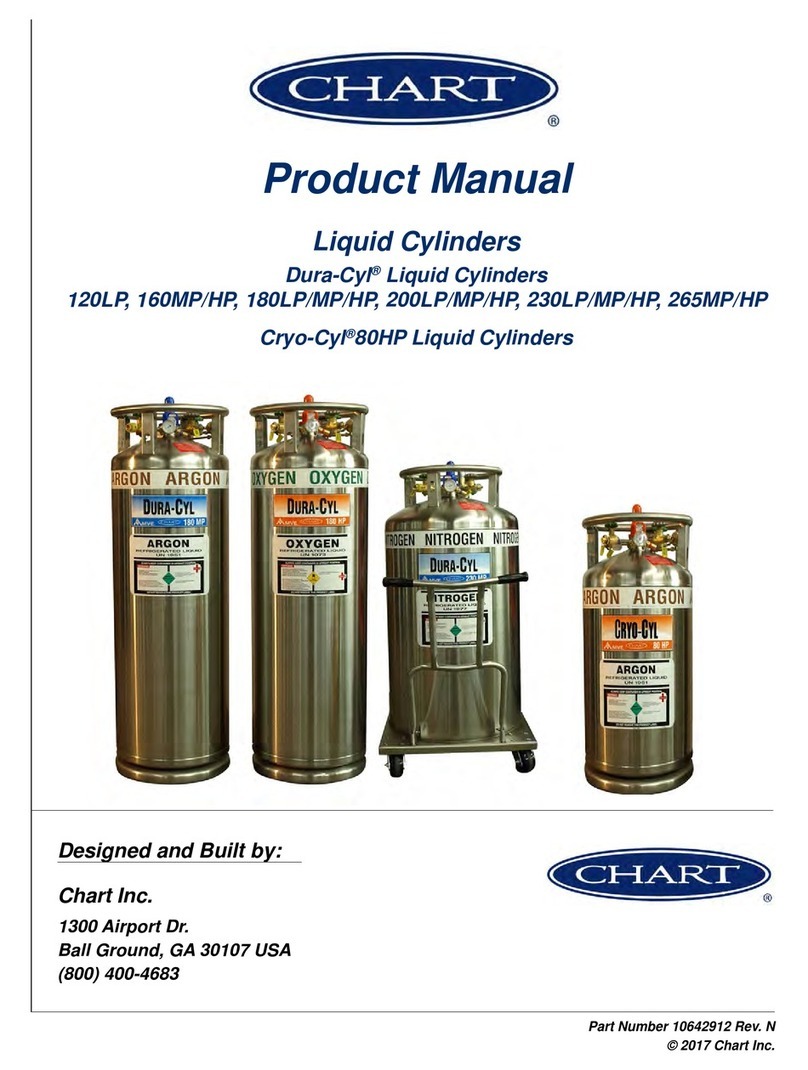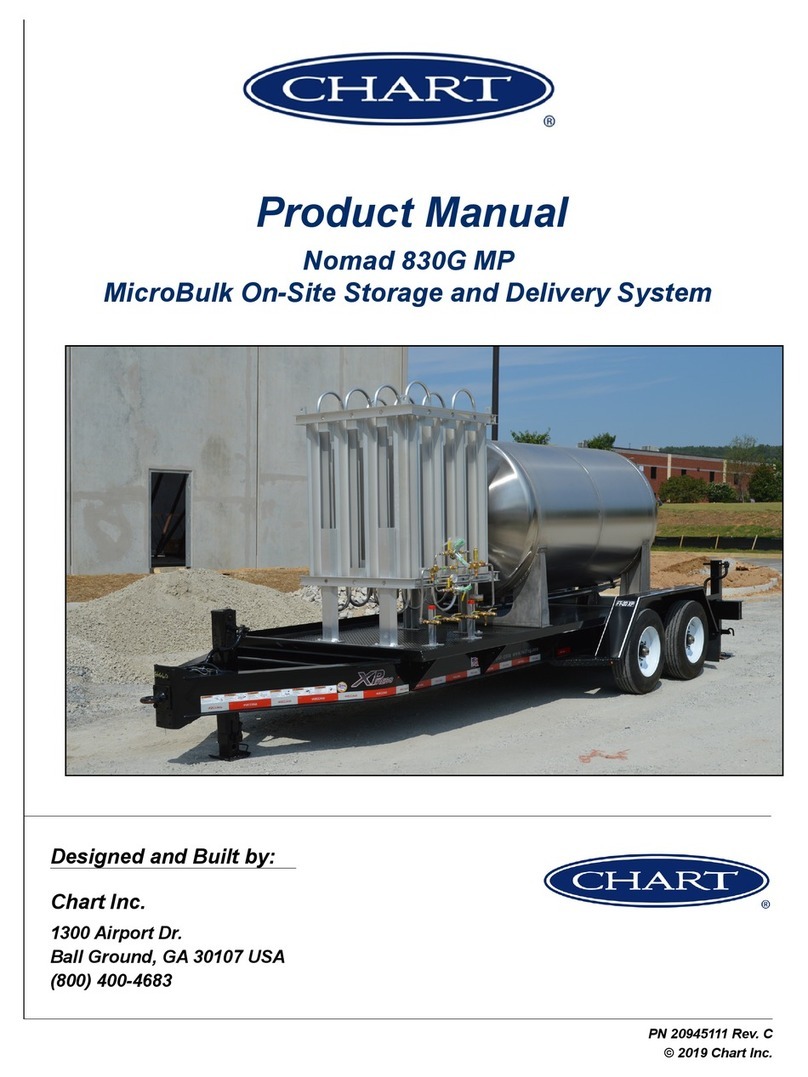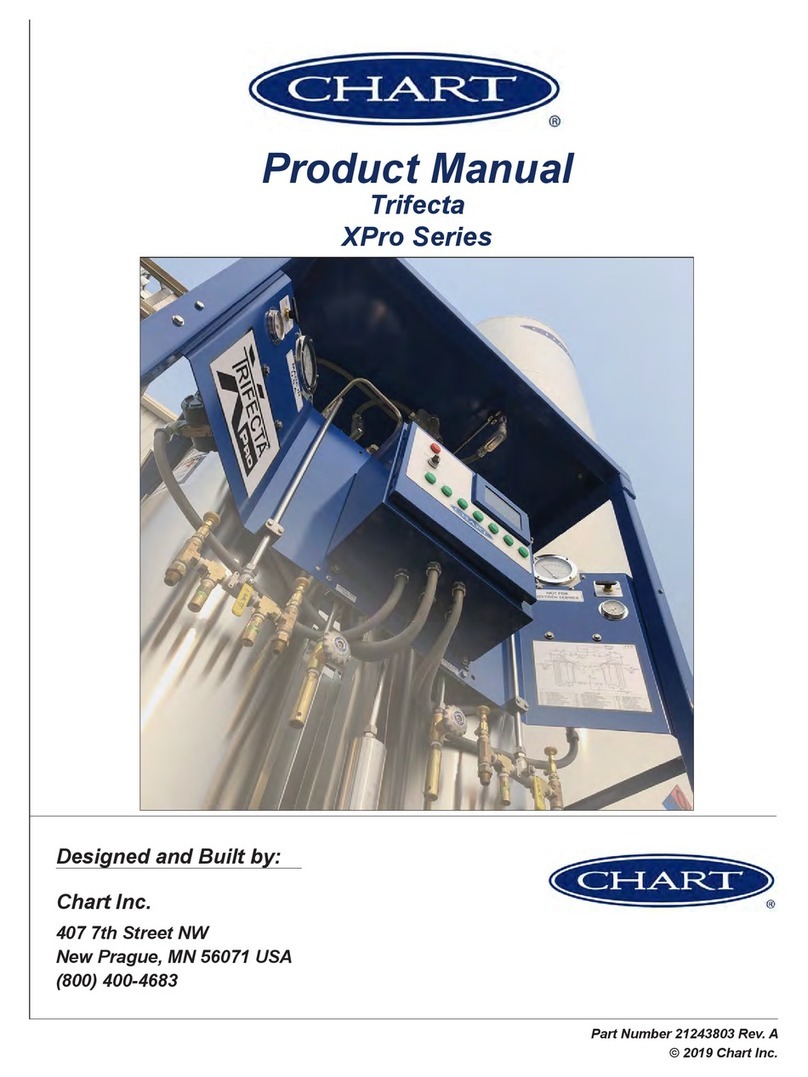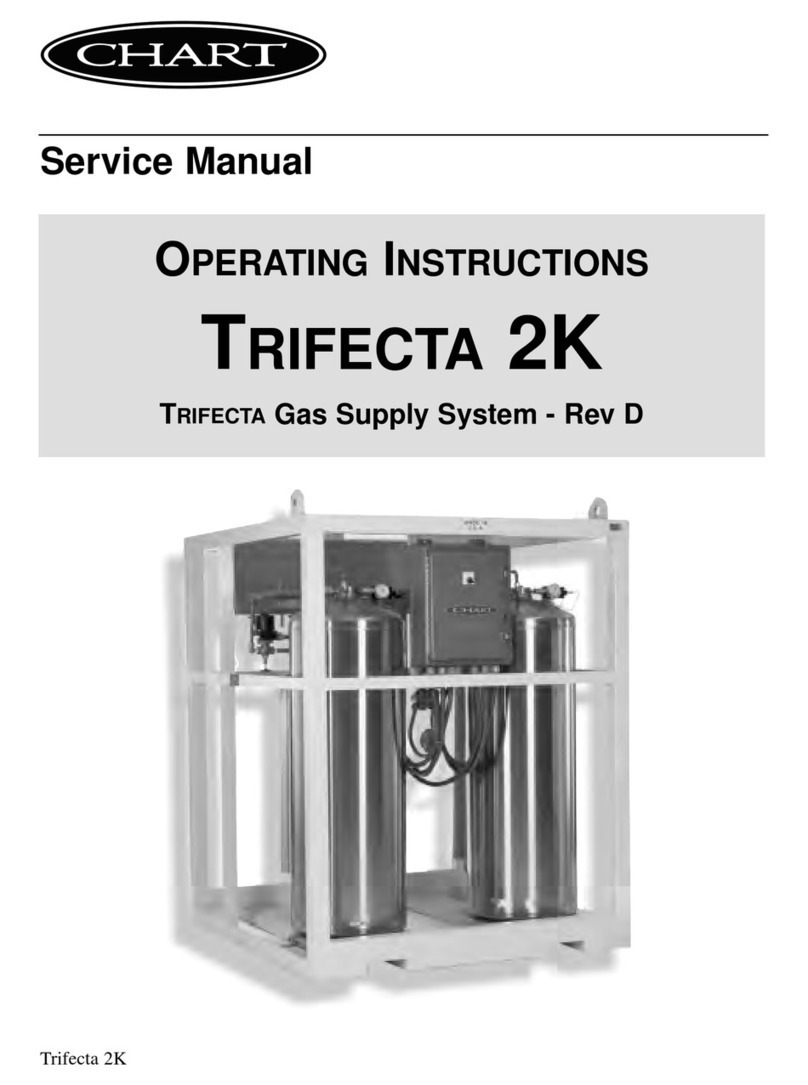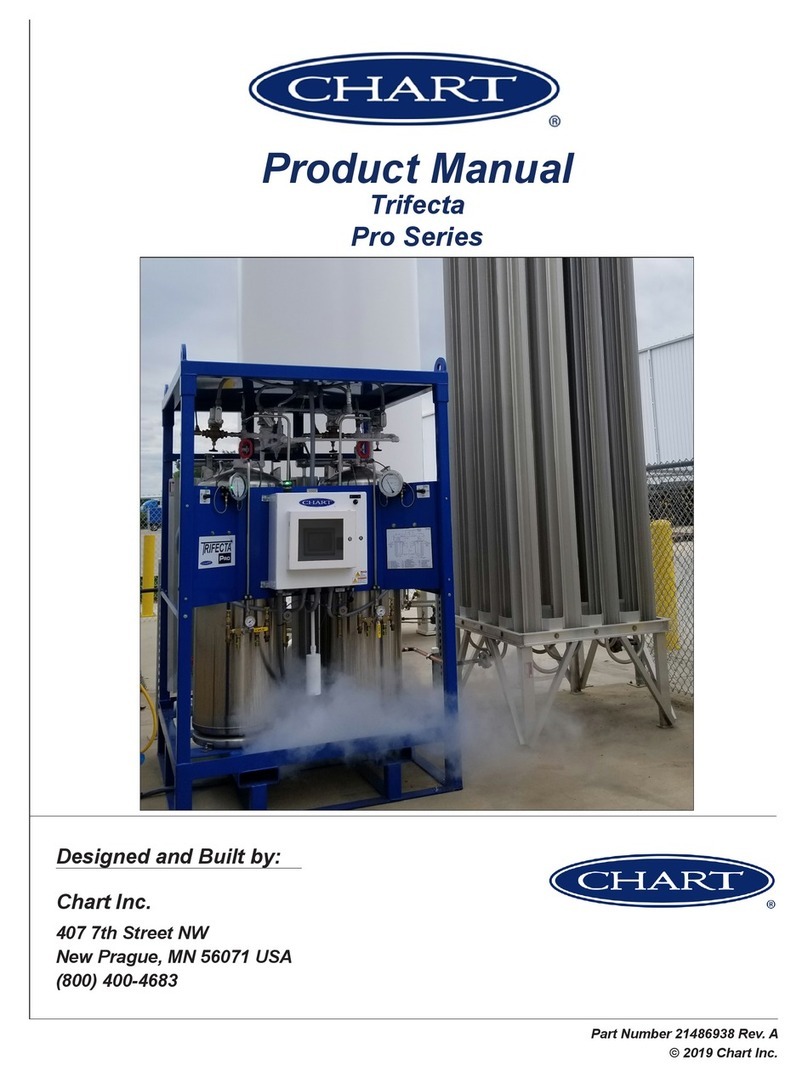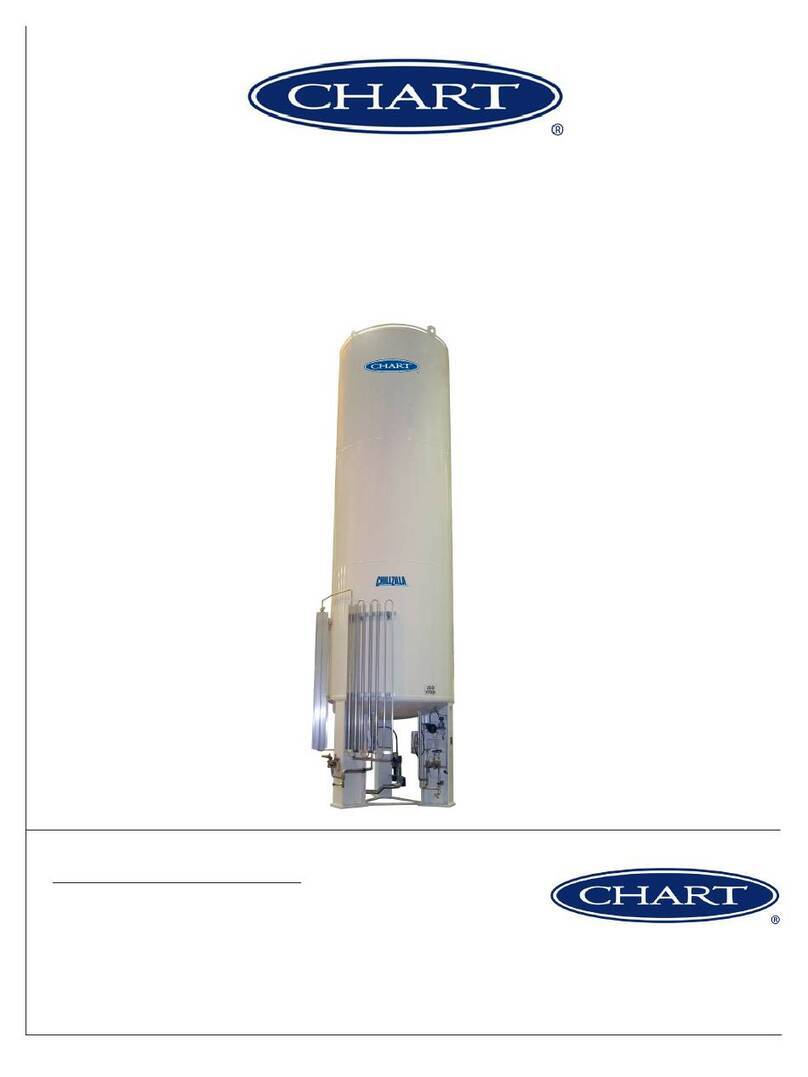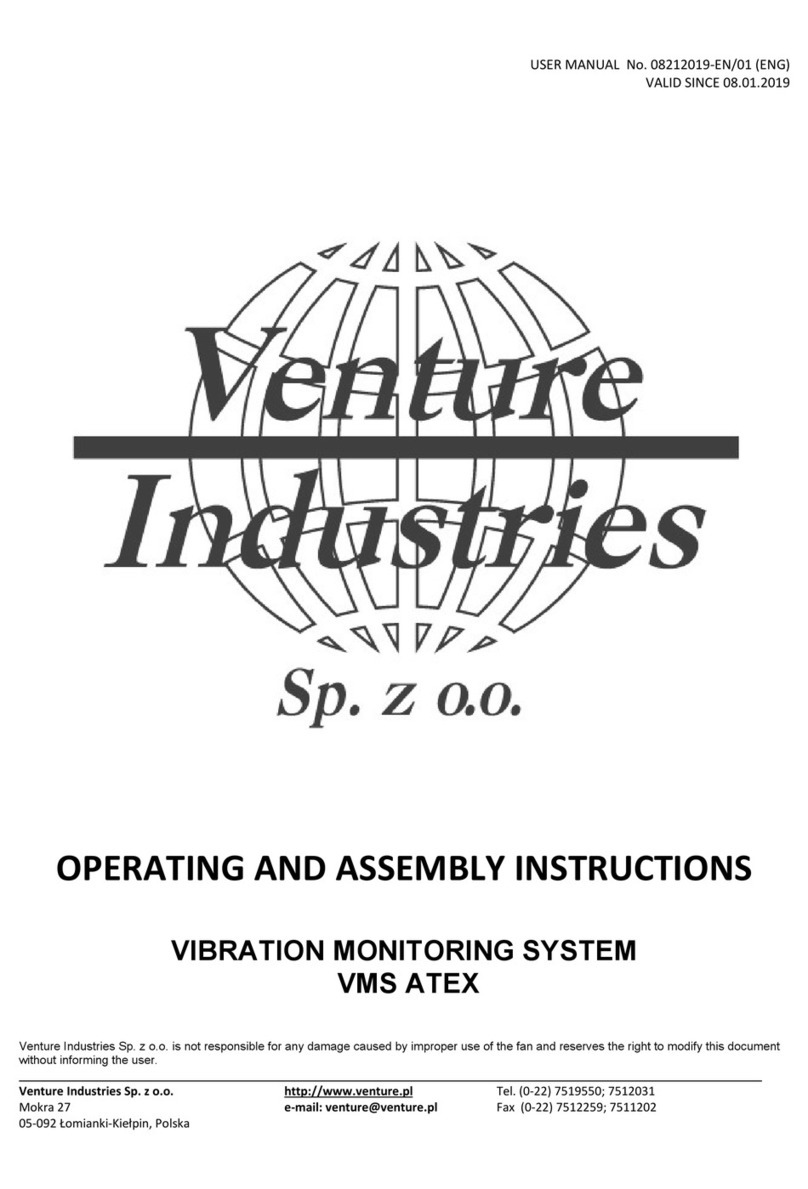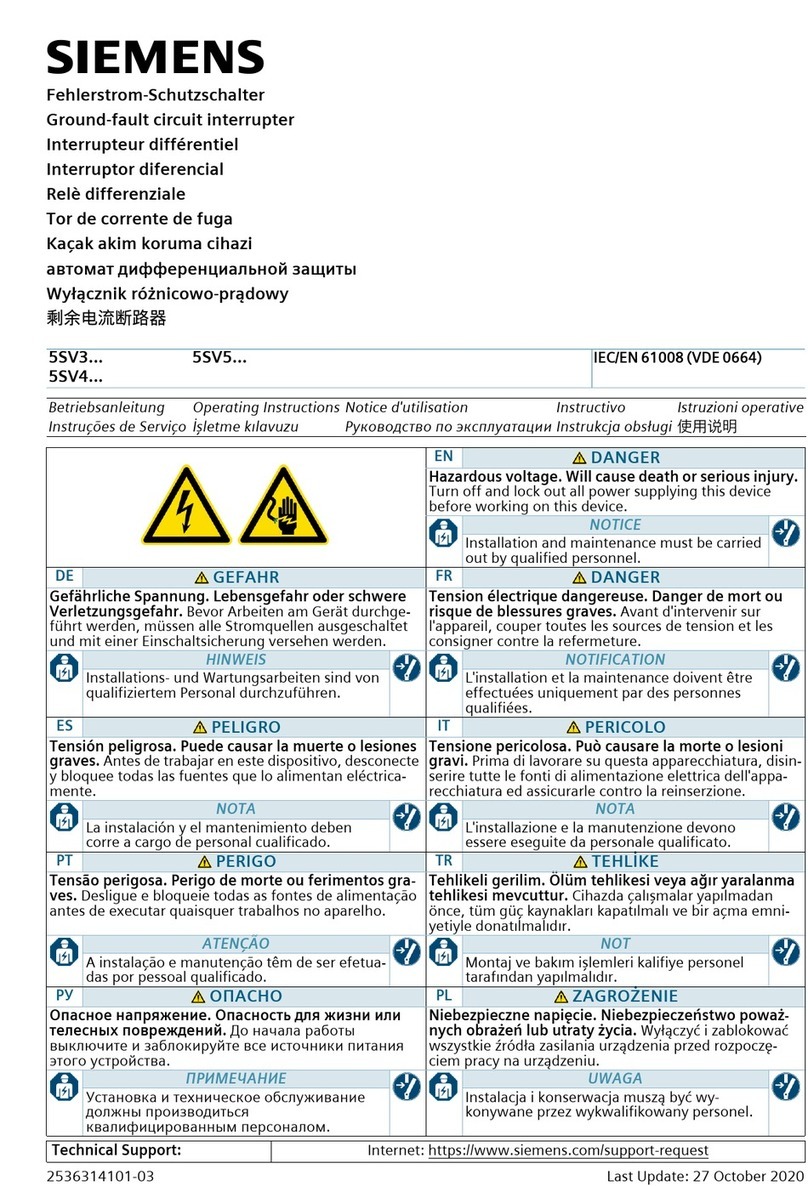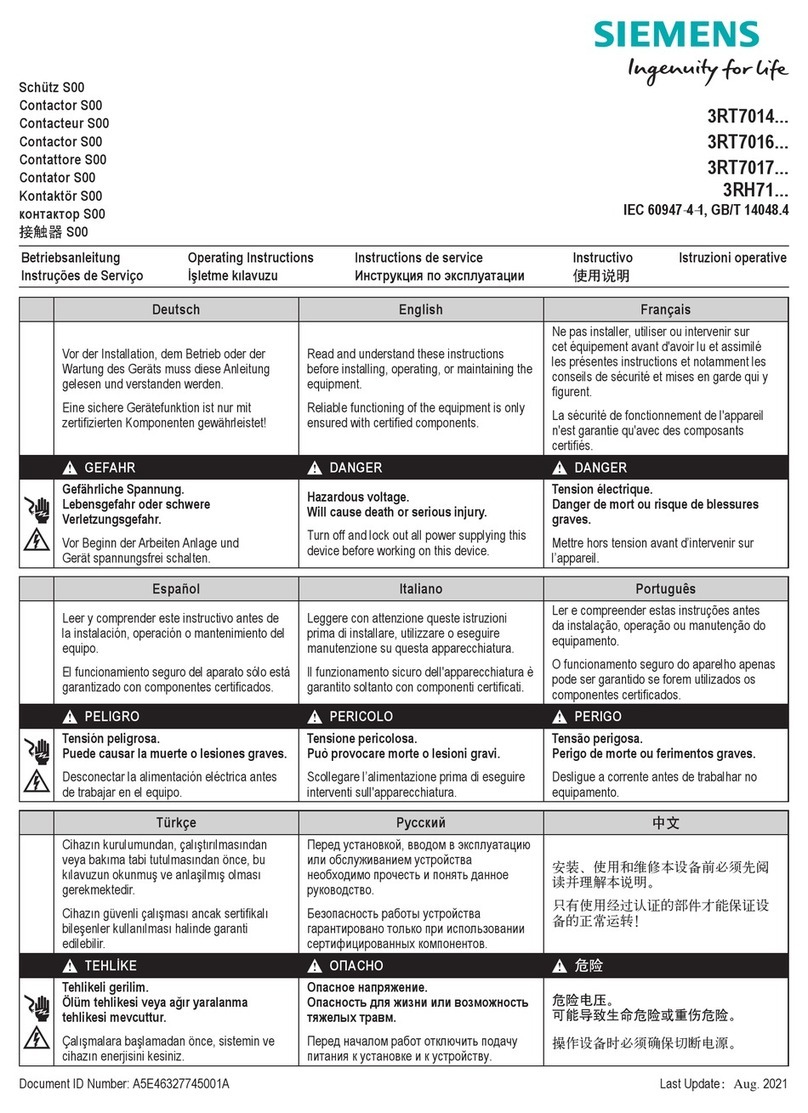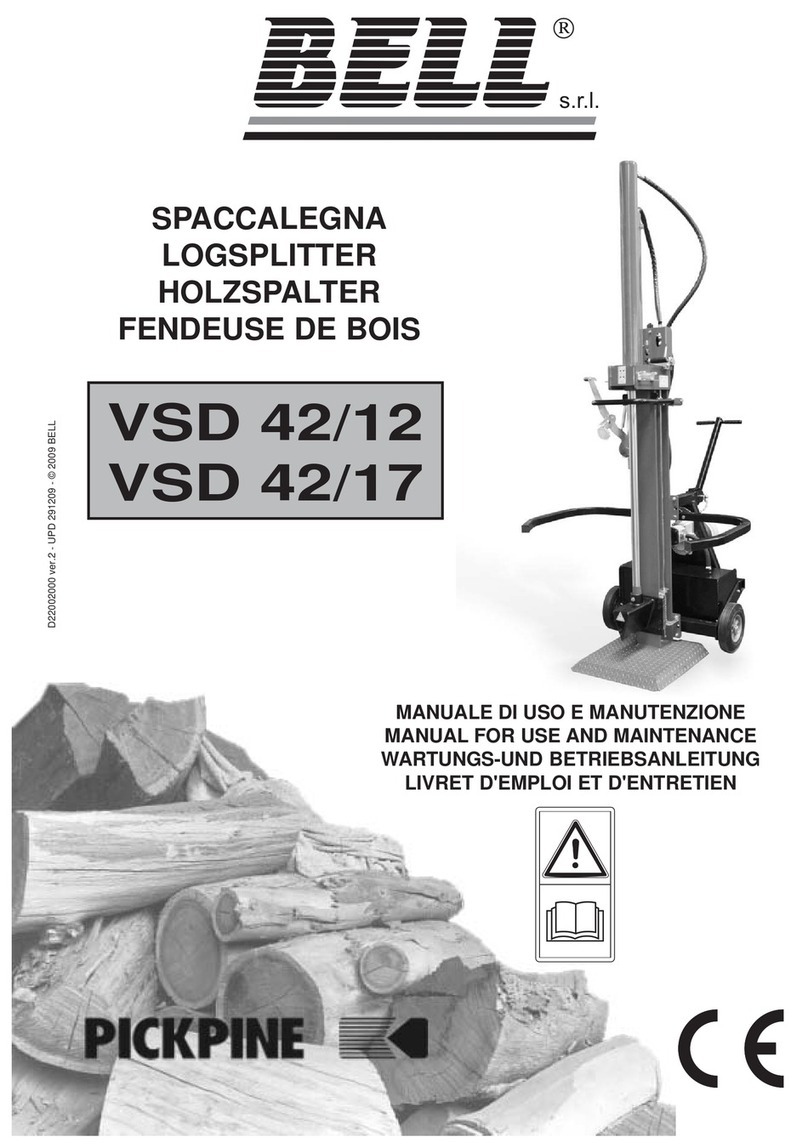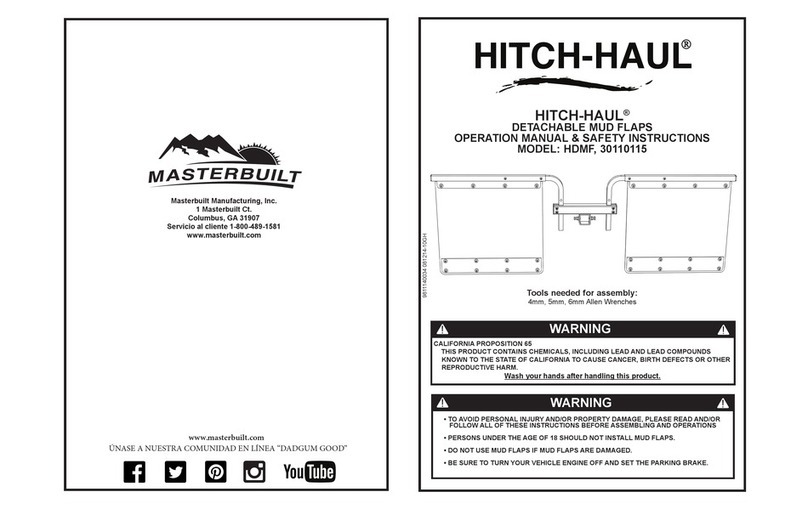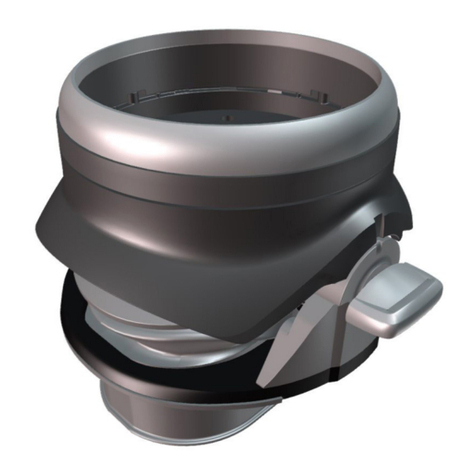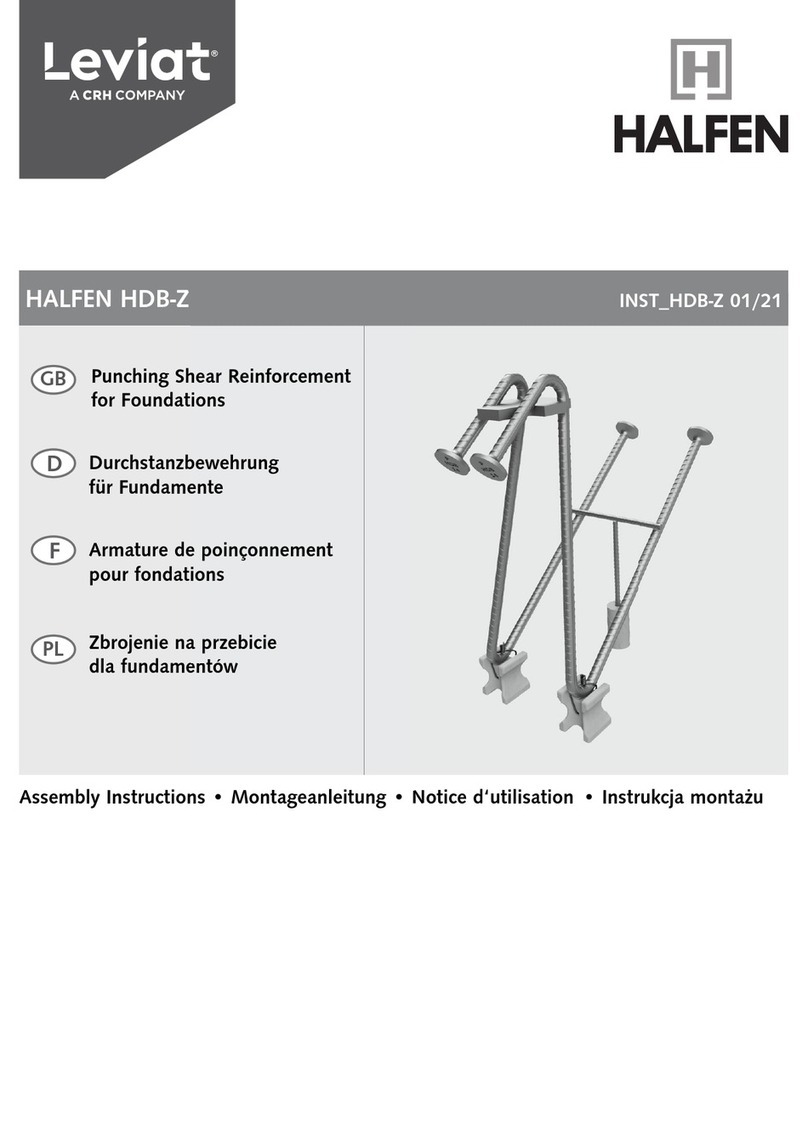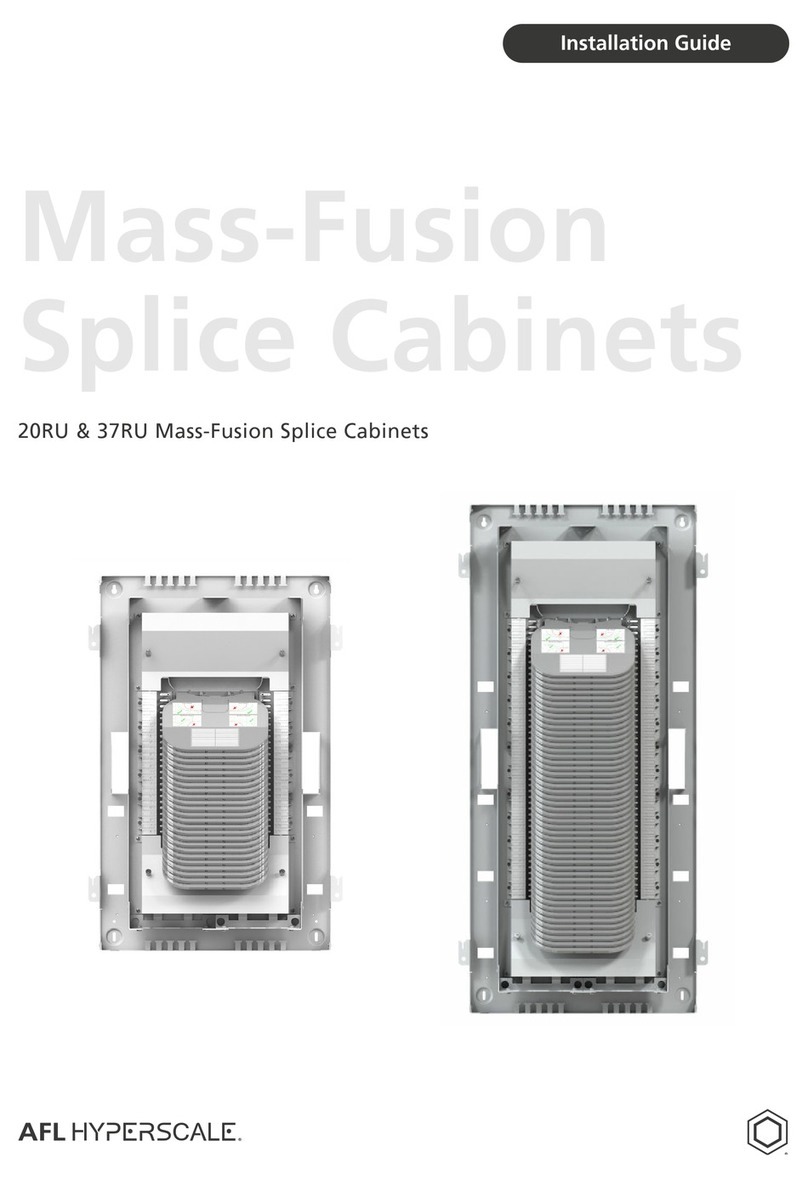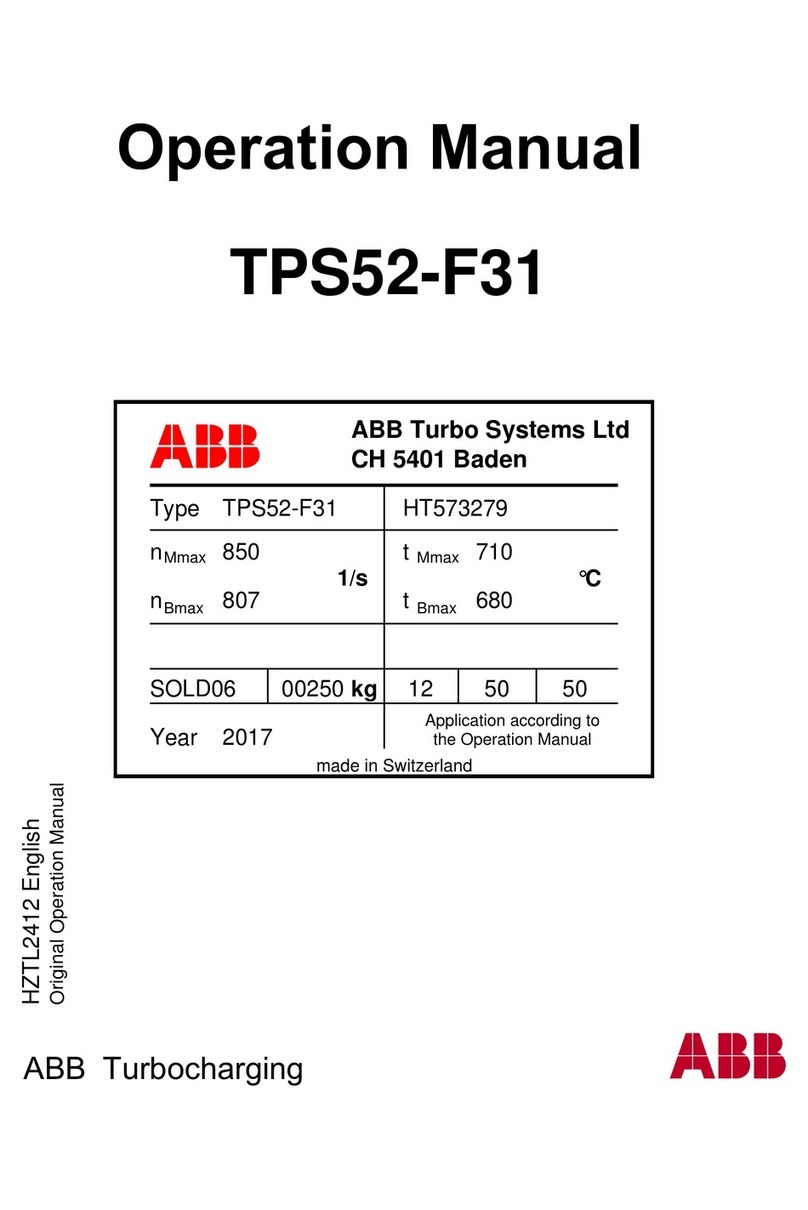
4
Safety Product Manual - Trifecta®Pro Series
Caution! Before locating oxygen
equipment, become familiar
with the relevant National Fire
Protection Association (NFPA)
standards for “Bulk Oxygen
Systems at Customer Sites,”
and with all local safety codes.
e NFPA standard (www.nfpa.org) covers general principles
recommended for installing bulk oxygen systems on industri-
al and institutional consumer premises.
Caution! To prevent possible tip over, do
not leave tank standing upright
unless it is secured to its
foundation (bolted down).
Transporting and erection of the tank should be performed
in accordance with rigging instructions available from Chart.
Failure to comply with these instructions may result in seri-
ous damage to the container.
Safety Bulletin
Portions of the following information is extracted from
Safety Bulletin SB-2 from the Compressed Gas Association,
Inc. Additional information on oxygen, nitrogen, argon, and
cryogenics is available from the CGA at www.cganet.com.
Cryogenic containers, stationary or portable, are from time
to time subjected to assorted environmental conditions of
an unforeseen nature. is safety bulletin is intended to call
attention to the fact that whenever a cryogenic container is
involved in any incident whereby the container or its safety
devices are damaged, good safety practices must be followed.
e same holds true whenever the integrity or function of a
container is suspected of abnormal operation.
Good safety practices dictate the contents of a damaged or
suspect container be carefully emptied as soon as possible.
Under no circumstances should a damaged container be le
with product in it for an extended period of time. Further, a
damaged or suspect container should not be relled unless
the unit has been repaired and re-certied.
Incidents which require that such practices be followed
include: highway accidents, immersion of a container in
water, exposure to extreme heat or re, and exposure to most
adverse weather conditions (earthquake, tornadoes, etc.) As a
rule of thumb, whenever a container is suspected of abnor-
mal operation, or has sustained actual damage, good safety
practices must be followed.
In the event of known or suspected container vacuum prob-
lems (even if an extraordinary circumstance such as those
noted has not occurred), do not continue to use the unit.
Continued use of a cryogenic container that has a vacuum
problem can lead to embrittlement and cracking. Further,
the carbon steel jacket could possibly rupture if the unit is
exposed to inordinate stress conditions caused by an internal
liquid leak.
Prior to reusing a damaged container, the unit must be tested,
evaluated, and repaired as necessary. It is highly recommend-
ed that any damaged container be returned to Chart for
repair and re-certication.
e remainder of this safety bulletin addresses those adverse
environments that may be encountered when a cryogenic
container has been severely damaged. ese are oxygen
decient atmospheres, oxygen enriched atmospheres, and
exposure to inert gases.
Oxygen Decient Atmospheres
Warning! Nitrogen and argon vapors in
air may dilute the concentration
of oxygen necessary to support
or sustain life. Exposure to
such an oxygen decient
atmosphere can lead to
unconsciousness and serious
injury, including death.
e normal oxygen content of air is approximately 21%. De-
pletion of oxygen content in air, either by combustion or by
displacement with inert gas, is a potential hazard and users
should exercise suitable precautions.
One aspect of this possible hazard is the response of humans
when exposed to an atmosphere containing only 8 to 12%
oxygen. In this environment, unconsciousness can be imme-
diate with virtually no warning.
When the oxygen content of air is reduced to about 15 to
16%, the ame of ordinary combustible materials, including
those commonly used as fuel for heat or light, may be extin-
guished. Somewhat below this concentration, an individual
breathing the air is mentally incapable of diagnosing the
situation because the onset of symptoms such as sleepiness,
fatigue, lassitude, loss of coordination, errors in judgment
and confusion can be masked by a state of “euphoria,” leaving
the victim with a false sense of security and well being.




















